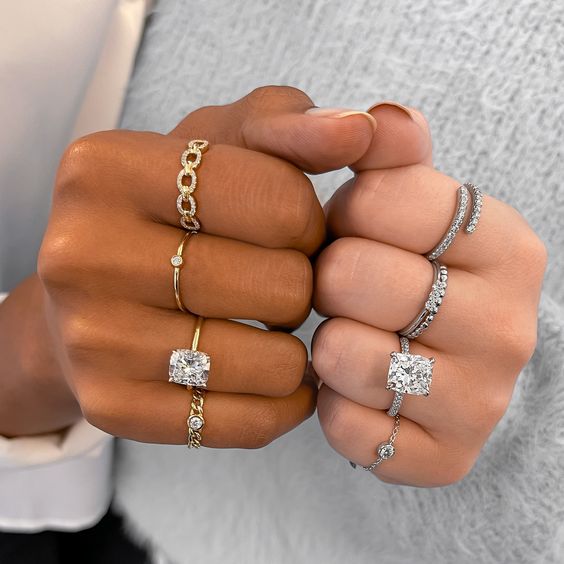When it comes to choosing the perfect gemstone for an engagement ring or special jewelry, the debate of moissanite vs diamond continues to be a hot topic. With advances in science and a growing shift towards ethical and budget-friendly choices, man made diamonds and moissanite have gained massive popularity. But how do they truly compare? And which one is right for you?
Let’s dive into the details and explore the differences between moissanite, natural diamonds, and lab-grown (man-made) diamonds, so you can make an informed decision.
What Is Moissanite?
Moissanite is a gemstone made of silicon carbide. Originally discovered in a meteor crater by French chemist Henri Moissan in 1893, moissanite vs diamond lab created because it’s extremely rare in nature. While it may look very similar to diamonds, it has a different chemical composition, brilliance, and hardness level.
Key Features:
- Brilliance: Moissanite has more “fire” than diamonds, meaning it reflects more rainbow-colored light. This gives it a very sparkly appearance.
- Durability: It scores 9.25 on the Mohs hardness scale, making it a very durable option, but slightly softer than diamonds.
- Cost: Moissanite is significantly more affordable than both natural and lab-grown diamonds.
- Eco-friendly: Because it’s lab created, moissanite vs diamond has a much smaller environmental footprint than mined diamonds.
What Are Diamonds?
Diamonds are made of carbon and are the hardest naturally occurring substance known to man. They have been the traditional choice for engagement rings for decades due to their exceptional hardness, brilliance, and status symbol.
Types of Diamonds:
- Natural Diamonds: Formed over billions of years under the earth’s crust. Often associated with high cost and ethical concerns (like conflict diamonds).
- Man Made Diamonds (Lab-Grown Diamonds): Created in a lab using advanced technology that mimics the natural diamond-forming process. These are chemically, physically, and visually identical to mined diamonds.
Man Made Diamonds: The Ethical and Smart Choice?
Lab-grown diamonds have taken the market by storm. They are real diamonds — not imitation stones — created using one of two methods: High Pressure High Temperature (HPHT) or Chemical Vapor Deposition (CVD).
Why Choose Man Made Diamonds?
- Same composition as natural diamonds.
- No mining, making them a more ethical and sustainable choice.
- Affordable: Typically 30–50% cheaper than natural diamonds of the same quality.
- Certified: Many come with certification from the same labs that grade natural diamonds (like GIA or IGI).
Which One Should You Choose?
Choosing between moissanite vs diamond , man made diamonds, and natural diamonds depends on what you value most — appearance, price, ethics, or tradition.
Choose Moissanite If:
- You want maximum sparkle and fire.
- You’re looking for an affordable and durable gemstone.
- You value eco-friendliness and don’t mind it’s not a “real” diamond.
Choose Lab-Grown Diamonds If:
- You want a real diamond without the high cost.
- Ethics and sustainability are important to you.
- You want traditional diamond beauty with modern values.
Choose Natural Diamonds If:
- You want the traditional prestige and sentiment of a natural stone.
- Budget is not your main concern.
- You prefer a diamond formed naturally over billions of years.
Final Thoughts
In the moissanite vs diamond debate, there is no wrong answer — only what’s right for you. With stunning visual similarities and durable quality, moissanite is a fantastic option for those on a budget. On the other hand, man made diamonds provide the beauty and authenticity of real diamonds without the ethical or financial baggage of mined stones.
In today’s world, being conscious of your choices — from the sparkle on your finger to the source it came from — is more important than ever. Whether you choose moissanite, lab-grown diamonds, or mined diamonds, you’ll be investing in something meaningful, personal, and beautiful.




